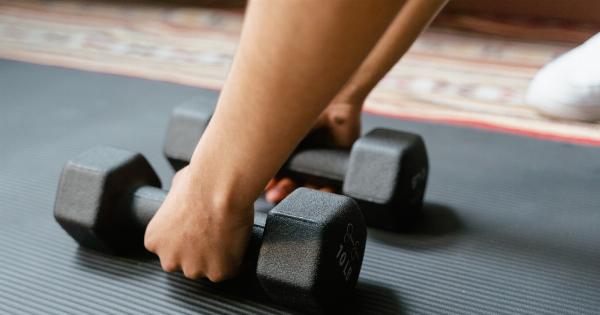Depression is a mental health condition that affects millions of individuals worldwide. It is characterized by persistent feelings of sadness, low mood, and a loss of interest or pleasure in activities.
While antidepressant medications and therapy are commonly prescribed treatments for depression, there is an increasing body of evidence that suggests exercise may also be an effective way to alleviate depressive symptoms.
Exercise has long been known for its physical health benefits, such as weight management, improved cardiovascular health, and increased muscle strength.
However, recent studies have also shown that regular physical activity can have a positive impact on mental health, including reducing symptoms of depression.
The Science behind Exercise and Depression
Research has indicated that engaging in exercise releases endorphins, which are often referred to as “feel-good” chemicals. These chemicals interact with receptors in the brain to reduce pain and create a sense of pleasure and well-being.
In addition, exercise stimulates the production of serotonin, dopamine, and norepinephrine, neurotransmitters that play a crucial role in mood regulation.
Furthermore, exercise has been found to rebalance the body’s stress response system. People with depression often experience an overactive stress response, leading to an excessive release of stress hormones, such as cortisol.
Regular exercise can help regulate this response, lowering overall stress levels and improving mood.
Types of Exercise Beneficial for Depression
While any form of physical activity can have some positive effects on mental health, certain types of exercise seem to be particularly beneficial in reducing depressive symptoms. These include:.
Aerobic Exercise
Aerobic exercises, such as jogging, swimming, cycling, or dancing, increase heart rate and promote the circulation of oxygenated blood to the brain.
They have been found to have significant antidepressant effects, often comparable to medication or therapy.
Strength Training
Strength training exercises, such as weightlifting or resistance training, have been shown to improve mood and reduce symptoms of depression.
They increase the production of endorphins and help build muscle, promoting a sense of accomplishment and self-esteem.
Yoga and Mind-Body Exercises
Yoga and other mind-body exercises, such as tai chi or qigong, combine physical movement with mindfulness and meditation. These practices have been shown to reduce stress, improve sleep, and alleviate symptoms of depression.
Outdoor Activities
Spending time in nature has been associated with a range of mental health benefits. Engaging in outdoor activities, such as hiking, gardening, or simply taking a walk in a park, can help reduce symptoms of depression and improve overall well-being.
The Benefits of Exercise on Depression
1. Increased production of endorphins, serotonin, dopamine, and norepinephrine, which are neurotransmitters associated with improved mood and well-being.
2. Reduced levels of stress hormones, such as cortisol, leading to a decrease in overall stress levels and enhanced stress management abilities.
3. Improvement in self-esteem and body image, as exercise promotes a sense of accomplishment and physical well-being.
4. Increased social interactions, especially when engaging in group or team activities, which can alleviate feelings of loneliness and isolation often associated with depression.
5. Enhanced sleep quality, as exercise can regulate sleep patterns and improve the ability to fall asleep and stay asleep.
How Much Exercise is Needed?
The optimal amount of exercise for individuals with depression varies, but most studies suggest that engaging in moderate-intensity exercise for at least 150 minutes per week can significantly reduce depressive symptoms.
This can be achieved through 30 minutes of exercise on most days of the week.
It is important to note that while exercise can be an effective treatment for depression, it is not a substitute for professional help.
Individuals experiencing severe depression should seek guidance from a healthcare professional who can provide appropriate treatment options.
Tips for Incorporating Exercise into a Depression Treatment Plan
1. Start small: Begin with manageable goals and gradually increase the duration and intensity of exercise over time.
2. Choose activities you enjoy: Engaging in activities that you find enjoyable increases the likelihood of sticking with an exercise routine.
3. Find a workout buddy: Exercising with a friend or joining a group class can provide motivation and accountability.
4. Create a routine: Establish a consistent exercise schedule to make it a habit and easier to maintain in the long term.
5. Seek professional guidance: Consult with a fitness professional or therapist who can provide guidance on suitable exercises and help create an exercise plan tailored to your needs.
Conclusion
While medication and therapy remain important pillars of treatment for depression, exercise can offer an additional avenue for managing depressive symptoms.
Incorporating regular physical activity, whether through aerobic exercises, strength training, yoga, or outdoor activities, can be a valuable part of an overall depression treatment plan. The numerous mental health benefits of exercise make it a powerful tool for improving mood, reducing stress, enhancing self-esteem, and promoting overall well-being.






























